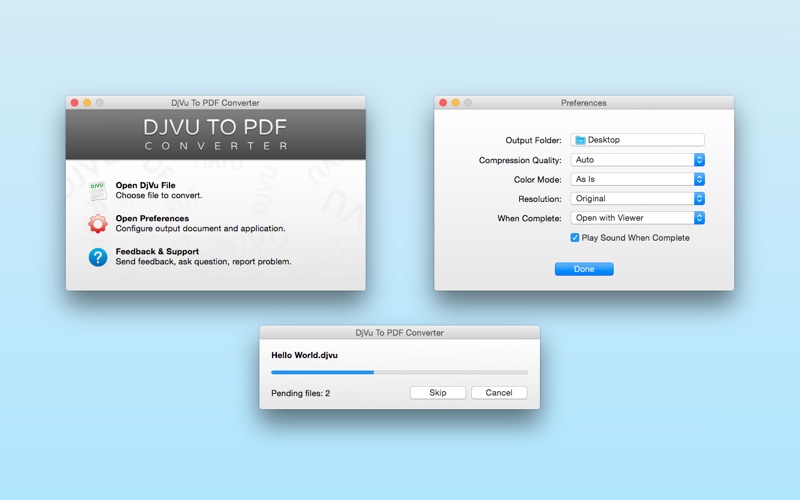

Nevertheless, it can be easier to work with smaller files because various processes (extracting images etc.) are quicker. Wikimedia Commons used to have a 100MB limit, and earlier it was even smaller than that, but the limit is now 4GB (with most uploading methods).
#Djvu vs pdf pdf#

DjVu has been supported since the beginning of the ProofreadPage extension and held a monopoly regarding proofreading on Wikisource for a long time. As an open format from the start, it was allowed to be hosted on, and supported by, Wikimedia.
#Djvu vs pdf free#
Warning: template has been deprecated.- Excerpted from DjVu on Wikipedia, the free encyclopedia.ĭjVu files are an open source container format, holding page images and text to replicate scanned documents. Like PDF, DjVu can contain an OCR text layer, making it easy to perform copy and paste and text search operations. The DjVu developers report that color magazine pages compress to 40–70 kB, black and white technical papers compress to 15–40 kB, and ancient manuscripts compress to around 100 kB a satisfactory JPEG image typically requires 500 kB. This allows for high-quality, readable images to be stored in a minimum of space, so that they can be made available on the web.ĭjVu has been promoted as an alternative to PDF, promising smaller files than PDF for most scanned documents. It uses technologies such as image layer separation of text and background/images, progressive loading, arithmetic coding, and lossy compression for bitonal (monochrome) images.

This leaves the question: Which file format should be chosen when starting a new transcription project?ĭjVu (pronounced "day Since then, the PDF format has changed it is now acceptable for Wikisource's purposes and covered by the extension.įor historical reasons, DjVu files are still preferred on Wikisource but either DjVus or PDFs can be used and there are advantages to both. When the extension was first written, only DjVu files were compatible with our needs, so only DjVu files were considered for the software. These days, the ProofreadPage Extension can use different formats for the scanned file. This uses a scanned file of a physical work to create an Index page, from which Page pages are created, which are eventually transcluded into the main namespace for anyone to read. The ProofreadPage Extension is the backbone of Wikisource's workspace (the Index namespace and the Page namespace) in which proofreading takes place. It is not a policy or guideline, and editors are not obliged to follow it. The app works on any device, including smartphones.This is an essay it contains the advice and/or opinions of one or more Wikisource contributors. The application can process DjVu files hosted on websites and in the cloud without downloading them to your computer. Advanced machine-learning algorithms accurately detect the structure and formatting of the content and enhance the original page images with text overlay that you can select, copy and search. This free online application allows you to convert single-page and multi-page DjVu files into searchable, indexable and navigable PDF documents. It is also important to ensure that the resulting PDF documents contain a text layer, and not just scanned pages, so that their content can be searched, indexed, or imported into databases. As a result, converting DjVu to PDF becomes a top priority. PDF is currently taking the leader role in this area, becoming the industry standard for storing and sharing documents, while DjVu is declining into the background. Originally developed as a competitor to PDF, it was widely used for digitizing paper documents and books in the early 2000s thanks to its high compression ratio and good visual quality. The DjVu format is specifically designed for storing scanned documents containing a combination of text and images.


 0 kommentar(er)
0 kommentar(er)
